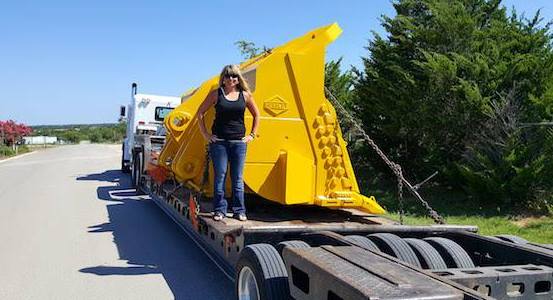
The Trucking Business III
March 31, 2021
The Trucking Business IV
April 15, 2021Paving the Way Toward Progress
It’s that New Yorker cartoon, where the doctor says to the patient: “Structurally, you’re sound. It’s your façade that’s crumbling.” When it comes to the nation’s infrastructure, we have crumbling that’s affected both the structure and the façade.

Infrastructure: a starry future?
After decades of neglect, there’s finally some real hope for movement on a newly-proposed $2.25 trillion infrastructure proposal. It holds a broad definition of “infrastructure,” including:
$621 billion for Transportation, improving roads, bridges, railways, public transit, ports, airports and electric vehicles. The goal here is to reduce greenhouse gas emissions, improve air quality, and reduce congestion. Among the residual benefits are reductions in the wear and tear of, say, your rig hitting that pothole or rolling over uneven pavement, damaging wheels and chassis and putting your vehicle out of service, which causes delays and loss of income and opportunity. $174 billion of that is projected as investment in electric vehicles, including rebates, tax incentives, and a network of half a million charging stations.
$400 billion for Home Care, expanding long-term care services for the aged and disabled, with improved wages and better opportunity for care at home. As we approach the infrastructure proposal with a focus on how it affects the transportation industry, think of how this might help the owner-operators and their families, who cannot afford or maintain compassionate home care and grow the business at the same time.
$300 billion for Manufacturing, parts of which have $50 billion for developing semiconductors, $30 billion for medical manufacturing (including better preparedness for any future pandemics), and $46 billion to transition federal vehicles to electric and retrofit buildings for cleaner operations.
$213 for Housing, with the goal here as the building and retrofitting of some two million housing units, with construction and renovation of half a million homes for low-income and middle-income people.
$111 billion for Water, rebuilding the infrastructure for our nation’s water treatment, supply, and delivery.
$100 billion for Digital Infrastructure, expanding Internet access to communities and neighborhoods that currently have limited or no access.
Separately, each of these would seem like a good idea. Together, they would create a fairly comprehensive scenario of Opportunity: better quality of life, better job prospects, better chance to grow business and bank accounts.
And this: as our friends at Transport Topics report, “Stakeholders within the freight industry, business community, environmental organizations, labor interests and advocacy firms have joined various coalitions to raise attention about a need for improving the country’s infrastructure system.”
When the environmentalists and those in the freight industry can share a common cause, we call that progress.

